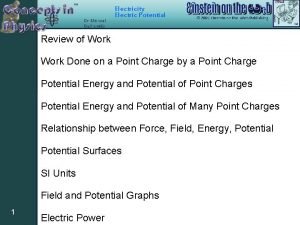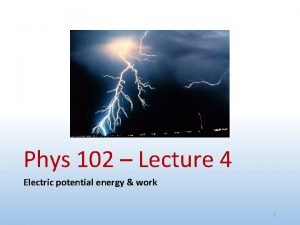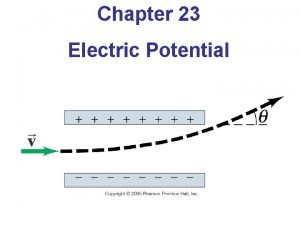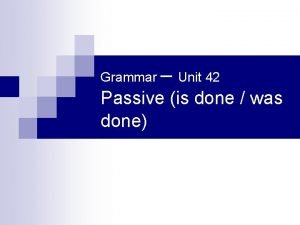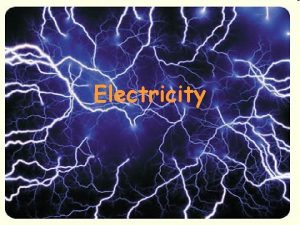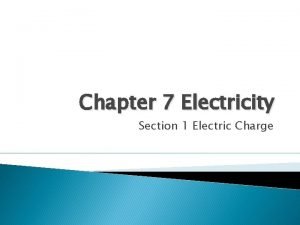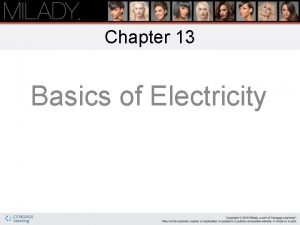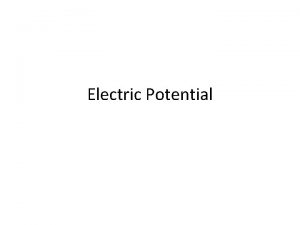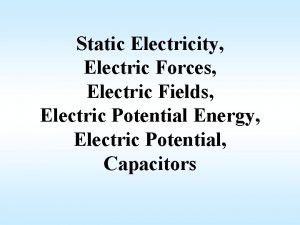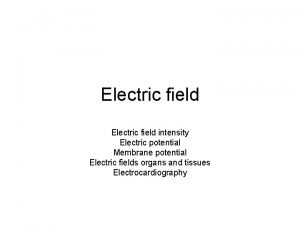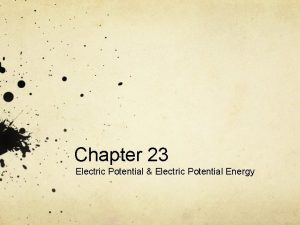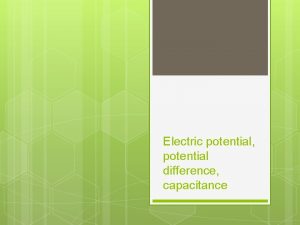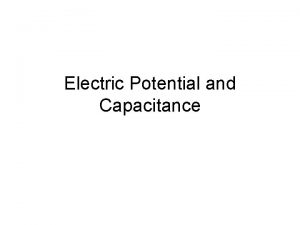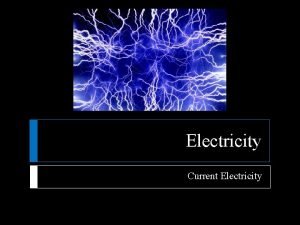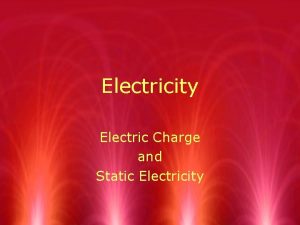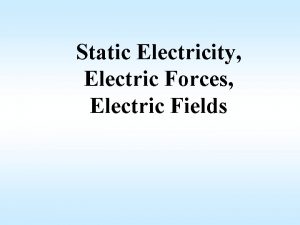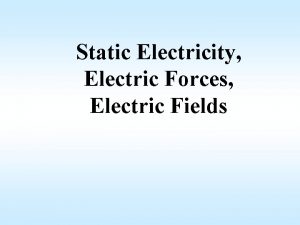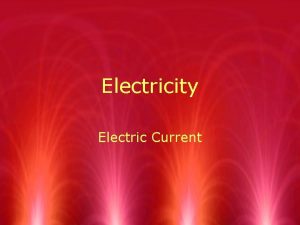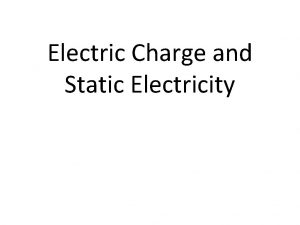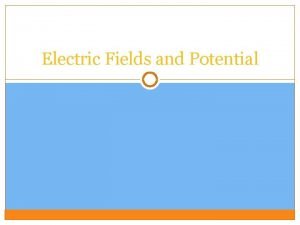Electricity Electric Potential Review of Work Done on




















- Slides: 20

Electricity Electric Potential Review of Work Done on a Point Charge by a Point Charge Potential Energy and Potential of Point Charges Potential Energy and Potential of Many Point Charges Relationship between Force, Field, Energy, Potential Surfaces SI Units Field and Potential Graphs 1 Electric Power

Electricity Electric Potential Definition of Work is defined as the amount of force acting over a distance. The unit of work is either Joules (J) or electron-volts (e. V) Δr F 2 φ

Electricity Electric Potential Example of Work The following is an example of the work done by gravity on a mass. y Δw Δh 1 m Δh 2 3 x

Electricity Electric Potential Example of Work This is an example using the fact that integrals areas under a curve. F (N) 1 A 1 0 -1 A 2 0 4 1 2 X (m)

Electricity Electric Potential Definition of a Conservative Force A force is conservative if the work it does on an object is zero when the object moves along a path and returns to its initial position. Examples of conservative forces are gravity, elastic force, electricity and magnetism. The following are not conservative: friction, tension, normal force. 5

Electricity Electric Potential Example of a Conservative Force Gravity as a mass is raised and lowered y Δh 1 2 1 x m Δh 2 6 5 3 4 WTOTAL = 0

Electricity Electric Potential Example of a Non-conservative Force Friction on a block that is moving around a table y ΔL 1 2 1 x m ΔL 2 5 3 4 Δw 7 WTOTAL = - fs (2ΔL 1 + 2ΔL 2 + 2Δw )

Electricity Electric Potential Consider the work necessary to put together two point charges. The force is given by Coulomb’s Law. The work needed to bring one charge from infinity to within a distance r 12 of the other is Don’t worry about the integral in the last equation. It is only there so that those who know calculus can see where the other part came from. 8

Electricity Electric Potential The potential energy held between these two point charges is then Now we consider the same relationship, but with electric field instead of force. This we call the potential. Since 9 , then we see that

Electricity Electric Potential What if there are more point charges? 1 2 3 10

Electricity Electric Potential Example 1 2 3 11

Electricity Electric Potential What about potential? 1 2 3 12

Electricity Electric Potential Example 1 2 3 13

Electricity Electric Potential Relationship between Work, Potential Energy, Force and Potential The table below represents the fundamental equations of electricity all of which a derived from the electric field E. Quantity Electric Field Force Potential 14 General Equation for Point Charges

Electricity Electric Potential A surface is an equipotential surface if the electric potential at every point on the surface is the same. As charges move on an equipotential surface the electric force does no work. The electric field at a point is always perpendicular to the equipotential surface on which the point lies. The electric field always points in the direction of decreasing potential. Java Applet This Applet can be found at http: //www. slcc. edu/schools/hum_sci/physics/tutor/2220/e_fields/java/ 15

Electricity Electric Potential Common SI Units in Electricity Electric Potential Electric Field Energy or Work 16 V J/C V/m N/C e. V J

Electricity Electric Potential Relationship Electric Potential and Electric Field The electric field is the slope of the electric potential. slope of this line is -E V s 17

Electricity Electric Potential Relationship Electric Potential and Electric Field The electric potential is the area under the curve of electric field. positive area E s negative area 18

Electricity Electric Potential What is electric power? Power is the change in work over time We will use this latter when we reach the topic in circuits. 19

Electricity Electric Potential What is electric power? Power is the change in work over time We will use this latter when we reach the topic in circuits. 20
 Electric potential from electric field
Electric potential from electric field Define electric potential and potential difference.
Define electric potential and potential difference. Volts to ev
Volts to ev Electric potential and potential difference
Electric potential and potential difference Electric potential and potential difference
Electric potential and potential difference Electric potential and potential energy
Electric potential and potential energy Electric field energy equation
Electric field energy equation Electric field from electric potential
Electric field from electric potential Electric potential to work
Electric potential to work Electric potential to work
Electric potential to work Relation between potential energy and electric field
Relation between potential energy and electric field Static electricity and current electricity
Static electricity and current electricity Electricity n
Electricity n Electricity and magnetism vocabulary
Electricity and magnetism vocabulary Unit 42 passive 1 is done was done
Unit 42 passive 1 is done was done Cutter mill diagram
Cutter mill diagram Sen bir koyun olsan bende bir kuzu sözleri
Sen bir koyun olsan bende bir kuzu sözleri Chapter 6 electricity section 1 electric charge answers
Chapter 6 electricity section 1 electric charge answers Electricity section 1 electric charge
Electricity section 1 electric charge Electricity section 1 electric charge
Electricity section 1 electric charge Chapter 13 basics of electricity
Chapter 13 basics of electricity








